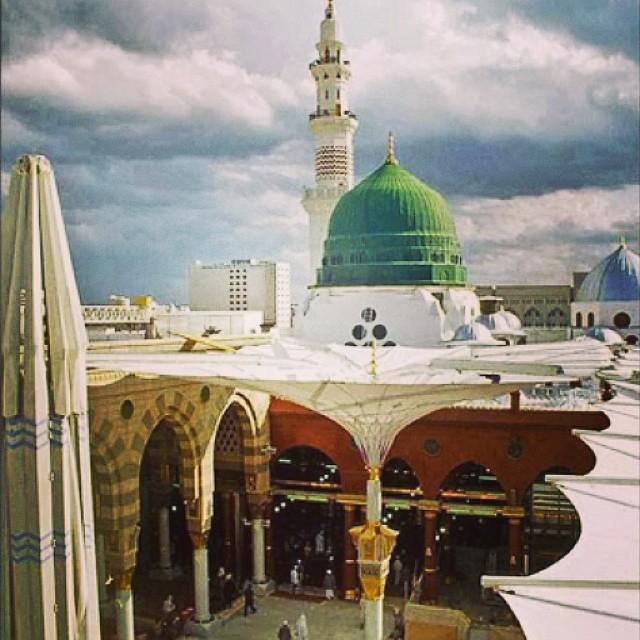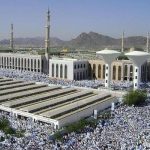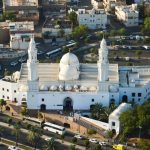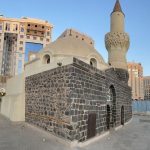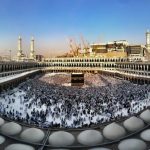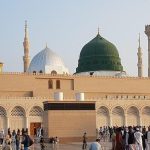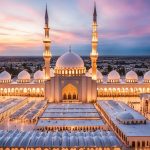Welcome to Umrah International, your dedicated partner in spiritual journeys. In this extensive exploration, we delve into the remarkable life of Umar ibn al-Khattab, the second caliph of Islam, whose leadership and vision were instrumental in shaping the early Islamic Empire.
Introduction to Umar ibn al-Khattab
Umar ibn al-Khattab, born around 586 CE in Mecca, stands as a monumental figure in Islamic history. His transformation from a fierce opponent of Prophet Muhammad to one of his most loyal supporters exemplifies the profound impact of faith and conviction. Known for his strong personality and unwavering commitment to justice, Umar’s legacy continues to inspire millions of Muslims around the world.
Early Life and Conversion to Islam
Background and Ancestrya
Hailing from the distinguished Adi clan of the Quraysh tribe, Umar was initially entrenched in the pre-Islamic traditions of his society. His early life was characterized by a staunch adherence to tribal customs, an environment that prized honor, strength, and loyalty to family. Before converting to Islam, he was known for his fierce opposition to the new faith, viewing it as a threat to the established social order.
The Moment of Enlightenment
In a significant turn of events around 615 CE, Umar underwent a profound transformation and embraced Islam. This pivotal moment not only altered his life trajectory but also galvanized the Muslim community, as his strength and eloquence became invaluable assets to the faith. His conversion is often cited as a testament to the power of personal revelation and the importance of sincere inquiry into one’s beliefs.
Role During Muhammad’s Lifetime
Eminent Advisor
By the time of the Hijrah (migration to Medina) in 622 CE, Umar had solidified his position as one of Prophet Muhammad’s foremost advisors. His counsel was sought on critical matters, reflecting his deep understanding of both religious and political dynamics. He played a vital role in the establishment of the Muslim community in Medina, helping to negotiate terms and foster relationships with the city’s Jewish tribes and other inhabitants.
Facilitating Leadership Transition
Following the death of Muhammad in 632 CE, Umar played a vital role in the selection of Abu Bakr as the first caliph. His diplomatic skills were crucial in reconciling differing factions within the Medinan Muslim community, ensuring stability during a tumultuous period. Umar’s support for Abu Bakr established a precedent for the leadership of the community based on consensus and collective agreement rather than solely familial ties.
Umar’s Reign as Caliph
Military Conquests and Expansion
Umar’s caliphate, which lasted from 634 to 644 CE, is marked by extraordinary military conquests. Under his leadership, the Arab armies achieved significant victories, annexing vast territories including Mesopotamia, Syria, Egypt, and parts of Iran. This rapid expansion transformed the Islamic state into a formidable global power and laid the groundwork for the Islamic Golden Age.
Administrative Innovations
Umar was a visionary leader who instituted various administrative reforms that would shape the Islamic Empire for centuries. He established the dīwān, a system that initially registered the pensions of soldiers but evolved into a comprehensive administrative body that managed the empire’s affairs. This bureaucratic structure enabled efficient governance and the fair distribution of resources.
Legal Foundations
One of Umar’s most notable contributions was the establishment of a robust judicial system. He appointed qadis (judges) to ensure justice across the newly acquired territories, emphasizing fairness and accountability in governance. His legal principles became the bedrock of Islamic jurisprudence, with significant advancements in areas such as family law, criminal justice, and property rights.
Infrastructure and Urban Development
Umar was also instrumental in urban planning and the establishment of infrastructure. He initiated the construction of roads, bridges, and garrison cities, including Al-Fusṭāṭ in Egypt and Basra and Kūfah in Iraq. These cities not only served military purposes but also became centers of trade, culture, and Islamic scholarship.
The Legacy of Umar ibn al-Khattab
A Just and Authoritative Leader
Umar was revered for his unwavering commitment to justice and moral integrity. His ascetic lifestyle and strict enforcement of law earned him respect and admiration across the Islamic community. The title Amir al-Mu’minin (Commander of the Faithful) reflects his dual role as both a spiritual and temporal leader. His leadership style was characterized by direct engagement with the populace, often visiting the markets to ensure fair trade practices and addressing the grievances of his subjects personally.
Cultural and Religious Significance
Beyond military and administrative achievements, Umar’s reign facilitated the dissemination of Islamic culture and values across diverse populations. His policies encouraged the integration of various ethnic and cultural groups within the Islamic framework, fostering a sense of unity and shared purpose. His commitment to the rights of non-Muslims in conquered territories set a precedent for tolerance and coexistence, highlighting his belief in justice for all.
Spiritual Leadership and Religious Reforms
Umar’s influence extended to the religious sphere as well. He was instrumental in compiling the Qur’an into a single manuscript, ensuring its preservation for future generations. His governance emphasized the importance of religious scholarship, and he supported scholars and jurists who contributed to the development of Islamic thought.
The Arabian Peninsula: A Comprehensive Exploration
Geographic Landscape
The Arabian Peninsula is characterized by a vast, central arid expanse punctuated by oases, wells, and ephemeral streams. To the south, it boasts verdant coastal strips that are often mountainous and well-watered, forming a stark contrast to the arid interior. To the north, fertile agricultural regions in Syria and Iraq have served as the cradle for advanced civilizations since the 4th millennium BCE. By the onset of the 1st millennium BCE, the southwestern region, known as Yemen, had developed into a network of settled kingdoms, speaking an Old South Arabian Semitic dialect and exhibiting cultural affinities with the Semitic societies of the Fertile Crescent.
The Emergence of Arab Identity
By the commencement of the Common Era, the principal inhabitants of the peninsula were the Arabs—a diverse assembly of Semitic-speaking tribes that included settled, semi-nomadic, and fully migratory groups. The term “ʿarab,” derived from the camel-herding Bedouin, encapsulated their identity and cultural essence.
Economic and Political Dynamics (Up to the 3rd Century CE)
Yemen: The Epicenter of Trade
Until the early 3rd century CE, the economic and political might of the Arabian Peninsula was predominantly anchored in the relatively autonomous kingdoms of Yemen. The Yemenis, armed with an astute understanding of the monsoon winds, orchestrated an extensive and lucrative trade network that connected East Africa and India through the Arabian Peninsula to the markets of Iraq and Syria. This intricate trade system became crucial for the economic sustenance of both Yemen and the Bedouin tribes, who relied on it alongside agriculture and pastoralism.
The Impact of External Forces
The 3rd century CE marked a turning point as external forces began to encroach upon Arabian affairs. The establishment of the Sāsānian Empire by Ardashīr I initiated conflicts with the Roman Empire, exacerbating geopolitical tensions. The Roman Empire’s reorganization under Constantine, alongside the diffusion of Christianity into Egypt and Abyssinia, complicated the political landscape. This period witnessed interactions among Christians, Jews, and Arabs, setting the stage for significant religious implications.
The political landscape further shifted in the 6th century when a Jewish ruler in Yemen instigated a massacre of Christians, leading to Abyssinian retaliation and occupation. This conflict effectively dismantled indigenous control in the region. Concurrently, the Sāsānian incursions towards the end of the century broadened Arabia’s religious and cultural horizons, linking communal affiliations with political power—an association that would resonate in the early Muslim community.
Arabia’s Integration into Global Politics
Paradox of Influence
Arabia’s engagement in international politics produced a paradoxical outcome: it bolstered the tribal Arabs’ influence at the expense of the major empires. The region’s ecology favored tribal independence, making the establishment of enduring large-scale states challenging. By the 5th century, the Byzantines and Persians fostered client states to retain influence over the Arab tribes. This intermingling with other cultures catalyzed a flourishing of internal cultural activity, particularly in poetry, which became emblematic of pre-Islamic Arab society.
The Rise of New Trade Networks
The flourishing of trade in the 5th and 6th centuries, coupled with intensified imperial rivalries, facilitated the integration of interior Arabs into broader communication networks. This interconnectedness laid the groundwork for the emergence of the Muslim community in Mecca and Medina, as external cultural exchanges inspired novel religious and social ideas.
Formation and Orientation of Arab Identity (c. 500–634 CE)
Mecca: A Nexus of Trade and Faith
Despite the predominance of 6th-century client states, the most consequential Arab polity emerged not from these entities but from the independent Arabs in Mecca. Strategically located at the crossroads of vital trade routes, Mecca evolved into a thriving city-state, its economy intricately linked to both long-distance and local commerce.
The Quraysh Clans and Mecca’s Ascendancy
Around 400 CE, the Quraysh, a group of Arabs transitioning to sedentarization, ascended to power in Mecca. Under the leadership of Quṣayy ibn Kilāb, the city flourished as a regional hub of trade and pilgrimage. The establishment of a quarterly ḥaram (sanctuary) rendered Mecca a sanctuary, fostering trade fairs and pilgrimage to the Kaʿbah, which housed various deities, including the paramount god Allāh.
Geopolitical Challenges and External Pressures
The expansionist ambitions of the Quraysh attracted the attention of neighboring non-Arab powers, culminating in external interventions, such as the Abyssinian invasion coinciding with Muhammad’s birth. Concurrent shifts in power dynamics and the decline of Yemeni kingdoms allowed Mecca to emerge as a focal point for tribal organization while maintaining its neutrality in broader conflicts.
Religious Significance of Mecca
The interplay between Mecca’s religious shrine and commercial hub signifies broader historical transformations in religious practices. While tribal Arabs adhered to localized belief systems centered around natural elements and spirits, the emergence of complex societies facilitated the rise of widely recognized deities, marking a shift towards more structured religious frameworks.
Evolving Social Dynamics Among the Meccans
The transition of the Quraysh to a sedentary lifestyle engendered social tensions necessitating novel behavioral norms. The intricate relationship between sedentary and migratory Arabs remained multifaceted, with kinship ties transcending different lifestyles. The commercial success of the Quraysh birthed a societal hierarchy that diverged from the egalitarian structures typical of Bedouin communities.
The Market-Shrine Nexus
The Meccan market-shrine nexus fostered a communal identity among surrounding tribes, encouraging the suspension of hostilities during pilgrimage. However, this dynamic did not erase entrenched tribal affiliations and rivalries, which persisted alongside emerging religious practices.
The Path to Unification
The Arabian environment posed significant challenges to the establishment of stable, large-scale states. Nevertheless, the sociopolitical developments in Mecca coincided with the proliferation of confessional religions, attracting unaffiliated monotheists known as ḥanīfs. These dynamics created fertile ground for a broader social unification through the emergence of prophetic leadership. Muhammad ibn ʿAbd Allāh, from the Hāshim clan of Quraysh, would ultimately assume this role, successfully uniting the Arab tribes and expanding their influence beyond the peninsula after his death in 632 CE.
Conversion to Islam: The Transformation of Hazrat Umar ibn al-Khattab
Early Opposition to Islam
Hazrat Umar ibn al-Khattab was initially a fierce adversary of Prophet Muhammad (S.A.W.) and the nascent Islamic faith. Renowned for his strength, courage, and steadfast opposition, Umar was determined to confront the growing influence of Islam. However, a pivotal moment in his life would soon alter his path dramatically.
The Moment of Acceptance
The story of Umar’s conversion is a significant chapter in Islamic history. Fueled by anger upon discovering that his sister and brother-in-law had accepted Islam, Umar set out with the intention of confronting the Prophet. As he journeyed, he encountered an individual who revealed that his family members had embraced the new faith.
Confrontation with His Sister
Infuriated, Umar rushed to his sister’s home, knocking forcefully at the door. Upon hearing him, his sister and brother-in-law quickly concealed the verses of the Quran they were reciting. When Umar demanded to know what they were reading, they initially hesitated but eventually disclosed that they were studying the Quran. In a fit of rage, Umar attacked his brother-in-law and injured his sister.
The Turning Point
However, witnessing his sister’s steadfast faith and her bloodied face stirred something profound within him. Umar’s heart softened, prompting him to request to see the verses they were reading. As he read the Quran, a remarkable transformation unfolded within him; the words resonated deeply, leading him to embrace Islam.
Impact on the Early Muslim Community
Umar’s conversion marked a watershed moment in Islamic history, significantly bolstering the early Muslim community. His journey from a vehement opponent to a staunch advocate of Islam stands as a powerful testament to the transformative potential of faith.
Role During Prophet Muhammad’s (S.A.W.) Time
A Close Companion
Following his conversion, Hazrat Umar became one of the Prophet’s closest companions. His counsel and unwavering support proved vital during critical events and battles throughout the Prophet’s life.
The Title “Al-Farooq”
Recognized for his exceptional sense of justice, Umar earned the title of “Al-Farooq,” meaning “the one who distinguishes between right and wrong.” His reputation for fairness extended to both Muslims and non-Muslims, solidifying his legacy as a just leader.
Caliphate and Governance
Ascension to Caliphate
After the passing of Hazrat Abu Bakr (R.A.), Hazrat Umar ascended to the role of the second Caliph of Islam. His caliphate was marked by substantial territorial expansion and significant advancements in governance.
Leadership Philosophy
Umar was celebrated for his commitment to justice, simplicity, and the welfare of the populace. His governance established principles of equity and public service that resonated throughout the Islamic State.
Notable Achievements
Administrative Reforms
Umar implemented administrative systems, such as the diwan (departments), to streamline governance and manage affairs efficiently.
Territorial Conquests
Under his leadership, the Muslim empire expanded considerably, encompassing territories in Persia, Syria, Egypt, and beyond.
Judicial Reforms
He established a system of qadis (judges) to ensure justice and equitable trials, laying the groundwork for an independent judiciary.
Economic Policies
Umar introduced various economic reforms, including stipends for the impoverished, which enhanced social welfare and poverty alleviation.
Social Welfare Initiatives
His reign was characterized by various social welfare programs aimed at supporting the needy, ensuring that food and resources reached those in need.
Infrastructure Development
Umar oversaw numerous construction projects, including canals, marketplaces, and roads, which significantly improved infrastructure throughout the empire.
Advancements in Education
Encouraging education, he facilitated the establishment of schools and educational institutions, promoting knowledge within the expanding Islamic empire.
Exemplary Personal Conduct
Umar’s lifestyle exemplified simplicity and integrity, reflecting the values he championed in governance.
Assassination and Legacy
Tragic End
Hazrat Umar’s caliphate was cut short when he was tragically assassinated by a non-Muslim. His death represented a profound loss for the Muslim community.
Lasting Influence
Revered as one of the “Ten Promised Paradise,” Umar is celebrated for his piety and exemplary leadership. His life continues to inspire Muslims around the world, leaving an enduring legacy of valor, justice, and dedication to public service. Hazrat Umar ibn al-Khattab remains a pivotal figure in Islamic history, serving as a role model for generations to come.
Hazrat Umar ibn al-Khattab: A Multifaceted Legacy
Title: “Al-Farooq” – The Distinction of Justice
Hazrat Umar ibn al-Khattab is celebrated as an expert jurist, renowned for his commitment to justice. His equitable treatment extended to both Muslims and non-Muslims alike, earning him the esteemed title of “Al-Farooq,” meaning “the one who distinguishes between right and wrong.” This title reflects his unwavering dedication to fairness and moral clarity in governance.
Asceticism: A Life of Humility
Umar (R.A.) exemplified humility and asceticism throughout his life. He led an austere lifestyle, often consuming simple, coarse food and patching his clothing with leather. Despite his esteemed position, he carried a water skin on his shoulders, showcasing his modesty. Umar seldom laughed and refrained from joking, embodying a serious commitment to his responsibilities. His ring bore the inscription: “Death is sufficient as an admonition, O Umar.”
Upon his appointment as Caliph, he stated, “Nothing is permissible for me from the treasury more than two clothes—one for the cold season and the other for the dry season.” He insisted that his family’s sustenance should match that of an average man from the Quraish tribe, reflecting his belief in equality and simplicity.
During a time of drought, Umar (R.A.) subsisted on bread and oil until his skin darkened, expressing concern for his people’s hunger: “What a bad leader I am if I eat my fill while the people go hungry.”
Appointment as Caliph: The Succession of Abu Bakr (R.A.)
As Abu Bakr’s (R.A.) health declined, he addressed the people, acknowledging that he might soon pass away and that their affairs were now in their hands. The Companions deliberated and ultimately returned to Abu Bakr, expressing their desire for him to appoint a successor. He requested time to choose a leader who would be pleasing to Allah and protective of His religion.
Abu Bakr appointed Umar ibn al-Khattab as Caliph, urging the people to listen and obey him. This appointment was made with the consent of the majority of the Companions, adhering to the principles of Shura (consultation). Umar officially became the second Caliph on Monday, 22nd Jumada Al-Akhirah, 13 AH (August 23rd, 634 AD).
Reign as Caliph: Achievements and Contributions
Umar’s tenure as Caliph marked significant advancements for the Islamic state, and he was the first to be officially titled “Prince of the Believers.” His accomplishments during this period are numerous and impactful:
- Foundation of the Lunar Calendar: Umar established the Islamic calendar based on the Hijra (migration) of Prophet Muhammad (S.A.W.) to Medina.
- Territorial Expansion: Under his leadership, the Islamic Empire expanded significantly, encompassing regions such as Iraq, Egypt, Libya, Persia, and parts of the Eastern Roman Empire, including the conquest of Jerusalem.
- Administrative Innovations: He introduced various civil administration roles, including Chief Secretary, Military Secretary, Revenue Collector, and Police Chief, among others, to improve governance.
- Complaint Investigation Department: Umar established a special department to investigate complaints against state officials, ensuring accountability.
- Public Ministry System: He was the first to introduce a public ministry system, maintaining records of officials and soldiers, and prohibited governors from engaging in trade while in office to prevent corruption.
Martyrdom: A Legacy of Sacrifice
After concluding his Hajj in 23 AH, Umar prayed for martyrdom in the land of the Prophet. His prayer was answered when he was fatally stabbed by Abu Lulu, a nonbeliever, during the Fajr Salah. Despite his grave injuries, Umar exhibited remarkable composure and leadership. He entrusted the completion of the prayer to Abdul Rahman bin Awf and requested that Suhayb Ar-Rumi lead the congregation in his absence.
Before succumbing to his wounds, Umar summoned key companions and advised them on choosing his successor. He emphasized the importance of consultation among the community leaders and directed that they seek advice from the Immigrants and Supporters.
His passing occurred on 26 Dhul Hijjah, 23 AH (November 7, 644 AD), at the age of sixty-three. According to his will, he was buried beside Prophet Muhammad (S.A.W.) and Abu Bakr (R.A.) in Masjid Al-Nabawi.
Wisdom and Sayings of Umar (R.A.)
Umar’s profound wisdom is reflected in his well-known sayings, which emphasize integrity, community, and the pursuit of righteousness. He advised, “Whoever concealed his secrets will have the choice of telling whomever he wants to tell… Do not think badly of a word spoken by your brother when you can still find good ways to interpret it.”
Before sending armies into battle, he urged them to “fear Allah” and adhere to principles of justice and mercy, instructing them to avoid unnecessary violence and uphold ethical conduct in warfare.
Umar ibn al-Khattab’s life, characterized by his unwavering dedication to justice, asceticism, and profound leadership, serves as an enduring source of inspiration for Muslims and humanity alike. His legacy continues to influence generations, exemplifying the virtues of integrity, humility, and devotion to public service.
Conclusion: Umar ibn al-Khattab’s Lasting Impact
The legacy of Umar ibn al-Khattab is profound and far-reaching. His leadership, military acumen, and administrative innovations were instrumental in establishing the foundation of the Islamic Empire. His principles of justice, equity, and moral integrity continue to serve as a guiding light for Muslims worldwide.
Final Reflections
Thank you for joining us in exploring the life and contributions of Umar ibn al-Khattab. As you prepare for your Umrah pilgrimage with Umrah International, reflecting on the lives of such extraordinary leaders can enrich your understanding of the deep historical roots of Islam.
At Umrah International, we are dedicated to providing you with comprehensive resources and expert guidance to ensure your journey is both fulfilling and transformative. We look forward to being part of your pilgrimage experience! Feel free to reach out to us for more information or assistance in planning your spiritual journey.


